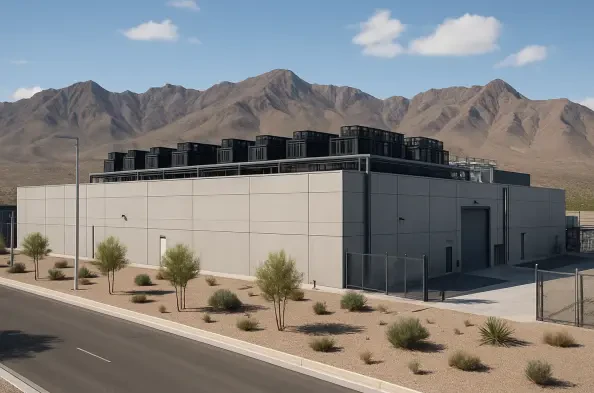In a landscape where artificial intelligence is reshaping industries at an unprecedented pace, Meta Platforms has made a bold $1.5 billion investment in a new data center in El Paso, Texas, marking its 29th global data center and third in the state. This facility is poised to become a cornerstone for AI infrastructure with a staggering 1-gigawatt capacity. As the tech world watches this development unfold, questions arise about its economic impact, sustainability promises, and transformative potential for the region. This roundup gathers insights from various industry voices, local stakeholders, and environmental advocates to paint a comprehensive picture of what this project means for El Paso and beyond.
Diverse Views on Meta’s Strategic Push into AI Infrastructure
Industry Analysts Weigh In on AI Ambitions
Industry analysts have hailed Meta’s El Paso project as a critical step in the race among hyperscalers to dominate AI capabilities. With projections estimating a $360 billion spend on AI infrastructure by major tech firms this year, the consensus is that such massive data centers are essential for handling complex AI workloads. Many experts emphasize that Meta’s focus on scaling up to a capacity capable of powering a city like San Francisco for a day positions it as a frontrunner in the tech innovation race.
However, not all opinions are uniformly optimistic. Some industry observers caution that the intense energy demands of a 1-gigawatt facility could strain local grids if not managed with cutting-edge efficiency. There’s also concern about the competitive pressure to innovate rapidly, with fears that any technological lag could cede ground to rivals like Amazon or Microsoft in the AI domain.
Contrasting Takes on Scalability Challenges
Another angle of discussion centers on the scalability of such ambitious projects. Certain tech strategists argue that while the infrastructure is impressive, the real test lies in integrating it seamlessly with Meta’s global network without bottlenecks. They point to the need for robust software and hardware synchronization to maximize output.
On the flip side, a segment of the tech community believes that Meta’s prior experience with large-scale data centers in Texas provides a strong foundation for overcoming these hurdles. They suggest that lessons learned from earlier facilities could inform strategies to mitigate risks, ensuring that the El Paso center meets its lofty goals without significant delays.
Economic Impacts: Local Voices and Broader Implications
El Paso Stakeholders on Job Creation and Growth
Local economic leaders in El Paso have expressed enthusiasm about the projected creation of 100 permanent jobs and over 1,800 construction roles during peak building phases. Community advocates see this as a transformative opportunity, noting that Meta’s broader $10 billion investment in Texas could elevate the city’s profile as a tech destination. Support from state policies, including tax incentives, further fuels optimism about long-term prosperity.
Yet, there’s a cautious undertone among some regional planners who warn against over-reliance on a single industry. They argue that while the immediate job boost is significant, El Paso must diversify its economic base to avoid vulnerabilities if tech investments wane. Workforce training gaps also surface as a concern, with calls for programs to prepare locals for specialized roles in data center operations.
State-Level Perspectives on Texas as a Tech Hub
At the state level, officials view Meta’s expansion as a validation of Texas as a magnet for tech giants. Endorsements from governmental bodies highlight the state’s robust electrical grid and business-friendly environment as key draws. Many believe this project could inspire a ripple effect, encouraging other companies to consider Texas for similar ventures.
Contrastingly, some economic analysts question whether Texas can sustain multiple large-scale tech projects without straining resources like power and water. They urge a balanced approach to growth, suggesting that state policies should prioritize infrastructure upgrades alongside incentives to prevent overburdening local systems as more investments pour in.
Sustainability Concerns and Commitments
Environmental Advocates Assess Green Promises
Environmental groups have taken note of Meta’s pledge to power the El Paso data center with 100% renewable energy and implement water-recycling systems. The company’s goal to be “water-positive” by 2030, restoring double the water it consumes, has been met with cautious approval. Advocates acknowledge that these steps align with a growing industry trend toward eco-friendly practices in data center design.
However, skepticism persists about whether such initiatives can fully offset the immense resource consumption inherent in facilities of this scale. Critics point out that renewable energy integration must be consistent and verifiable to avoid greenwashing accusations. They also stress the need for transparency in reporting water restoration efforts to ensure tangible benefits to local ecosystems.
Industry-Wide Shifts Toward Sustainable Tech
Broader industry commentary highlights a shift toward sustainability as a non-negotiable priority for tech giants. Many environmental consultants argue that Meta’s commitments could set a benchmark for others, pushing competitors to adopt similar green technologies. The focus on closed-loop cooling systems is often cited as a practical innovation that others might replicate.
On the other hand, some sustainability experts contend that the tech sector still lacks unified standards for measuring environmental impact. They suggest that while Meta’s efforts are commendable, without industry-wide accountability mechanisms, individual projects might fall short of addressing the cumulative ecological footprint of data centers globally.
Regional Transformation: Hopes and Hesitations
Local Leaders on El Paso’s Tech Future
Community figures in El Paso are abuzz with the potential for Meta’s presence to attract additional tech investments. Analogies likening Meta to a pacesetter in the industry reflect high hopes that the Borderplex area could redefine itself as a tech corridor. Local development groups are already brainstorming ways to leverage this momentum for broader economic diversification.
Yet, there’s a counterpoint from urban planners who caution that large-scale tech projects don’t always guarantee lasting benefits. They highlight risks of social displacement or economic inequality if growth isn’t inclusive. The challenge lies in ensuring that infrastructure and policy support keep pace with rapid changes to avoid unintended consequences for smaller businesses or residents.
Comparative Insights from Other Tech Regions
Looking at other regions with similar tech developments, some analysts draw parallels between El Paso’s trajectory and areas that have successfully integrated tech hubs. They note that strategic partnerships between local governments and companies often amplify positive outcomes, suggesting El Paso could learn from these models to maximize gains.
Conversely, a differing perspective warns of pitfalls seen elsewhere, where tech booms led to inflated costs of living or cultural erosion. These voices advocate for proactive measures in El Paso, such as affordable housing initiatives and community engagement, to balance economic progress with social stability as Meta’s project advances.
Synthesizing the Roundup: Key Takeaways
Reflecting on the varied insights gathered, it becomes clear that Meta’s $1.5 billion data center in El Paso sparks both excitement and critical discourse across multiple fronts. Industry analysts celebrate the strategic push into AI infrastructure, while acknowledging scalability and energy challenges. Local stakeholders in El Paso and Texas officials see immense economic potential, tempered by concerns over resource strain and workforce readiness. Environmental advocates appreciate sustainability commitments but call for greater accountability, and regional leaders envision a tech-driven future while grappling with social trade-offs.
As a next step, stakeholders might consider delving deeper into case studies of other tech-centric regions to inform El Paso’s path forward. Policymakers could prioritize frameworks that balance growth with sustainability, while community groups might focus on inclusive development initiatives. For those eager to stay engaged, exploring resources on AI infrastructure trends and regional economic strategies offers a valuable starting point to shape or contribute to this evolving narrative.






